
Christiansborg Palace
The impressive Christiansborg Palace was home to the Danish monarchy until 1794 when they moved to the Amalienborg Palace. Today, Christiansborg is one of the most visited monuments in Copenhagen and continues to lend its services to the Danish Crown.
History
Christiansborg Palace dates back to the 12th century, when warrior bishop Absalom, founder of Copenhagen, commissioned the construction of a grand palace to serve as his residence. The Danish royal family lived in the palace for centuries until 1794, when a terrible fire forced the royals to move house to Amalienborg Palace.
In 1884, Christiansborg Palace suffered a second devastating fire that swept through a large part of the structure. After the third reconstruction, the architects made a symbolic choice by adorning the tower's pinnacle with three crowns, representing each occasion of reconstruction.
In modern day, Christiansborg Palace is still active and services the state. The Palace holds a unique distinction as the seat of the Danish Parliament and the central hub for the judicial and executive branches. This makes Christiansborg the only building in the world that houses all three branches of government under its roof.
What to See at Christiansborg Palace
Palace Ruins
At the ruins of Christiansborg, you can see the remnants of the two previous structures: Absalom's palace from 1167 and the palace constructed after the 1794 fire. The exhibition also features the remains of the ancient city wall and moat, offering a unique opportunity to trace nearly nine centuries of Christiansborg Palace's rich history.
The Royal Ruins
The most interesting part of any visit to Christiansborg Palace is entering the royal rooms and imagining day-to-day life centuries ago. The palace halls are decorated with portraits of the royal Danish family, and each room serves a unique purpose.
In addition to the King and Queen's royal chambers, Christiansborg Palace boasts several noteworthy spaces, like the Royal Library, the Throne Room, the banquet hall, and the tapestry room. The tapestry room, with a capacity for up to 400 guests, is the most striking, making it former Queen Margaret's favorite room for hosting elegant international affairs.
The Stables
The royal stables house antique vintage carriages from the period previously used by the Danish royal family throughout Copenhagen's history. Here, within these stables, you can also see the royal horses, still in service to the Royal Guard.
Halfway through the 18th century, the Christiansborg Palace stables were home to over 250 horses.
Christiansborg Watchtower
In Copenhagen, there are many different viewpoints from which to enjoy the city skyline, but climbing up to the Christiansborg Watchtower is something else entirely. The best part is it's free! Fun fact: the entrance to the watchtower remained a secret for almost a century, only accessible by members of the royal family, who could climb Copenhagen's tallest tower for a privileged view.
Nowadays, the tower is home to several exhibitions that feature sculptures and historical objects, a restaurant, and photos depicting the history of Christiansborg Palace. The views from the top offer a unique and different panoramic view of the Danish capital.
Thanks to the commemorative three crowns, Christiansborg Watchtower is the tallest in Copenhagen, followed closely by the Copenhagen City Hall Watchtower.
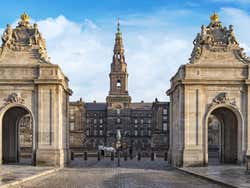
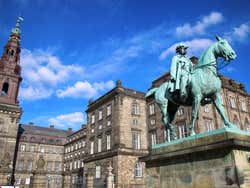
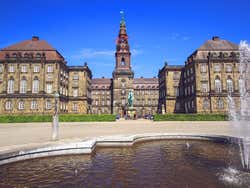
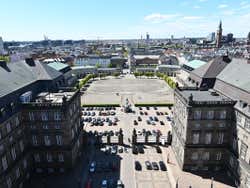
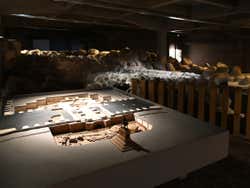
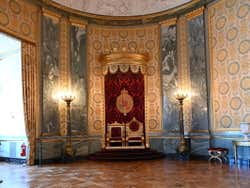
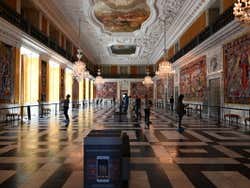
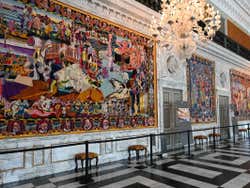
Schedule
Every day from 10:00 a.m. to 5:00 p.m.
Closed on Mondays from October to March.
Until 6:00 p.m. in July and August.
Price
Adults: 215 kr (US$ 33.77)
Students with ID: 140 kr (US$ 21.99)
Under 18: free admission.
Christiansborg Palace Guided Tour € 30 (US$ 35.21)
Nearby places
Copenhagen's Thorvaldsen Museum (88 m) Danish War Museum (242 m) National Museum of Denmark (352 m) National Library of Denmark (358 m) Guiness World Records Museum in Copenhagen (506 m)

